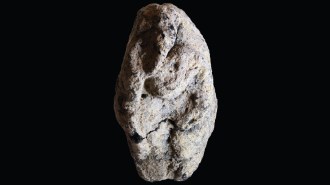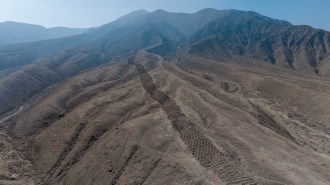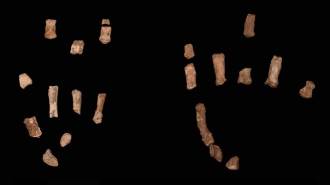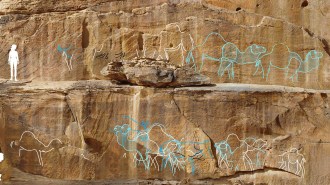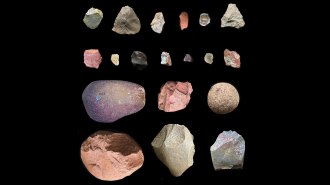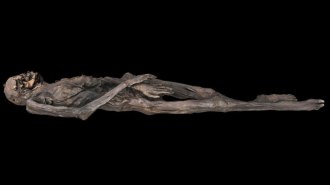Ancient rains made Sahara livable
Today, no one lives in the parched eastern Sahara desert of Egypt, Sudan, Libya, and Chad. But between 10,500 and 7,300 years ago, monsoon rains transformed this region into a lush magnet for people, a new investigation suggests.
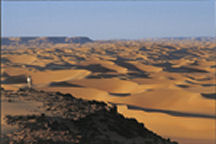
A gradual decline in rainfall and water sources from 7,300 to 5,500 years ago pushed Sahara residents into a few still-verdant outposts, say Rudolph Kuper and Stefan Kröpelin, both of the University of Cologne in Germany. This population shift contributed to the rise of Egyptian civilization by around 5,000 years ago, the researchers propose in the Aug. 11 Science.
To study climate and population changes in the region, Kuper and Kröpelin combined their own radiocarbon dates for 150 ancient Sahara settlements with independently obtained age estimates for other prehistoric sites in the region.
Data from ancient lakebeds and streams indicate that monsoon rains began abruptly around 10,500 years ago, the researchers say. Foraging groups then streamed into the savannalike eastern Sahara. At that time, Egypt’s Nile valley consisted of uninhabitable marshes.
By around 7,000 years ago, however, declining Sahara rainfall and water sources sparked an exodus of mobile foragers to the Nile valley, where dried-up marshes gave way to farming villages along the Nile River, the scientists say.

